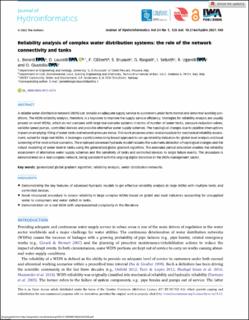| dc.description.abstract | A risk-based approach to support water utilities in terms of defining pipe rehabilitation priorities is presented. In a risk analysis in the risk management process, the probability that a given event will happen and the consequences if it does happen have to be estimated and combined. In the quantitative risk analysis, numerical values are assigned to both consequence and probability. In this study, the risk event addressed was the inability to supply water due to pipe breaks. Therefore, on the probability side, the probability of pipes breaking was assessed, and on the consequence side, the reduced ability to satisfy the water demand (hydraulic reliability) due to pipe breakage was computed. Random Forest analysis was implemented for the probability side, while the Asset Vulnerability Analysis Toolkit was used to analyse the network’s hydraulic reliability. Pipes could then be ranked based on the corresponding risk magnitude, thereby feeding a risk evaluation step; at this step, decisions are made concerning which risks need treatment, and also concerning the treatment priorities, i.e., rehabilitation priorities. The water distribution network of Trondheim, Norway, was used as a case study area, and this study illustrates how the developed method aids the development of a risk-based rehabilitation plan. | en_US |

